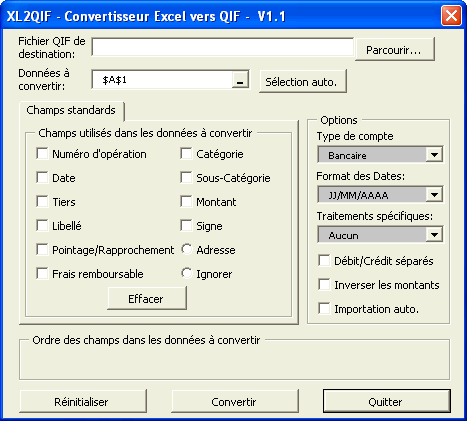
Xl2qif Excel 2010
Nov 19, 2018 - Add-ins are used to extend Excel's capabilities in lots of different ways. There is an add-in for excel 2010 windows 7, and a diff add-in for.
Find Your Add-ins Folder To find your default Add-ins folder, you can use either of these methods: • • Use my. Browse for the Addin Folder To manually locate the default Excel AddIns folder, follow the steps below. • Click the Developer tab on the Excel Ribbon.
If it isn't visible,. • Click the Add-Ins command • In the Add-Ins window, select any add-in in the list, and click the Browse button. That will open the Browse window, at the AddIns folder.
• Right-click on the path at the top of the Browse window, and click 'Copy Address as Text' • Click Cancel, to close the Browse window • Click Cancel, to close the Add-Ins window. • Open Windows Explorer, and paste the copied address into the address bar, then press Enter How to Use the Excel Addin Folder Path Locator File • Download a copy of my. Community board high five football. • Unzip and open the file, and enable macros • Go to the AddinsFolder sheet • Click the Show Addins Folder Location button. • In cell B4, the file path will appear.
Harris unity radio programming software. Harris Unity Radio Driver is a software program developed by Harris RF Communucations. Software for programming memories and settings of the radio for Windows. Inc 1 Commercial. Programming Software, Programming Cables, Service Manuals for Harris Radios.
For example, in Windows 10, it might be located here: C: Users UserName AppData Roaming Microsoft AddIns • Click the Open Addins Folder button • Windows Explorer will open, and will show the contents of the Addins Folder. NOTE: Close Excel before making any changes to the installed Addins How to Install an Excel Add-In Excel 2007 and Later To install an add-in, please follow these steps: • In Windows Explorer, open the Microsoft Addins folder on your computer. NOTE: If you aren't sure of the location, you can use the to find it. • Unzip the add-in file, if necessary, to extract the add-in file -- it will probably have an xlam extension • Save the add-in file in your Microsoft Addins folder.
NOTE: You can store the add-in in any folder, but it's easier to install if it's stored in the Addins folder • To allow Excel to open the add-in file automatically, you might need to unblock it. Right click on the add-in file and click Properties • If the following warning appears, click the Unblock box, to add a check mark -- 'This file came from another computer and might be blocked to help protect this computer' • Click OK • Open the Excel program In Excel: • On the Ribbon, click the Developer tab (if you don't see that tab, to show it) • Click the Add-ins button. • In the Add-in dialog box, add a check mark to add-in's name. Note: If you do not see the add-in in the list, click the Browse button. Navigate to the folder where you saved the xlam file, and select the add-in file • Click OK, to close the window.
• A new tab for the add-in might appear on the Ribbon, or a new command might appear on one of the existing tabs -- check the add-in notes, for help in locating it. • If you don't see a button on the Ribbon, you can, to run the macros. Add-in Custom Tab Not Showing 2016-Jul - 28: After a recent Microsoft update, some Excel add-ins (mine and others) are not loading correctly, and their custom tabs don't appear on the Excel Ribbon.